Santa Clara Valley Chapter (SCV) Report
IEEE Circuits and Systems Society (CASS) held a technical lecture titled “Enabling Wireless Autonomous Systems Using 5G” given by Dr. Nageen Himayat who is the Director of Intelligent Distributed Edge Networks Labs at Intel. The evening lecture was hosted at Qualcomm site in Santa Clara on April 11th 2019 and the total attendance was 51. Dr. Himayat articulated on the huge economic and societal impact of Autonomous Wireless Systems (WAS) while outlining significant challenges in meeting the reliability, latency and scalability requirements of these safety critical applications. Her lecture covered discussion of some of those challenges and technologies that advance 6G/5G+ wireless networks, as well as co-design of autonomous systems and wireless networks, towards addressing the stringent WAS requirements. The lecture was very well received and generated lots of Q&A from the audience.
On April 25th, Dr. Alyssa Apsel (CASS DL) from Cornell University gave a lecture titled “Flexible Radios and Flexible Networks.” In her lecture, Dr. Apsel described various approaches to drive the power down in radio networks that span across circuits and systems while adding flexibility to adapt across protocols and networks and work under changing device technologies. The total attendance was 28.
On September 6th, the Artificial Intelligence for Industry (AI4I) Fall 2019 was held at SC-9 Auditorium, Intel in Santa Clara. This half day sold-out event hosted four speakers and the total attendance as 148. The first speaker of the event was Dr. S. Y. Kung from Princeton University and the title of his lecture was “From Deep Learning to X-Learning: An Internal and Explainable Learning for XA.” In his talk, Dr. Kung described an Xnet that is used to simultaneously train the structure and parameters of the net while facilitating Internal Neuron's Explainability so as to fully support DARPA's Explainable AI (i.e. XAI or AI3.0). This is a superior approach when compared to Back-propagation (BP), an external learning paradigm, whose supervision is exclusively accessed via the external interfacing nodes (i.e. input/output neurons). According to Dr. Kung, the proposed approach compresses the structure while enhancing the accuracy. The second speaker of the forum was Pete Warden (Google) who covered the emerging requirements of deep learning workloads, including the barriers that are preventing more widespread deployment on low-energy systems. In addition, he highlighted from his first-hand experience, the intricacies of deploying practical applications and the future roadmap of this technology. The third speaker of the forum was Ephrem Wu who is a Sr. Director in the Silicon Architecture division at Xilinx. Ephrem outlined the performance requirements of FPGA-based neural-network accelerators and the strategies for meeting those challenges. Ephrem described the approach his team has undertaken to unleash latent performance in FPGA-based inference processors where they utilize a convolutional neural network accelerator that operates at 92.9% of the peak FPGA clock rate. In addition, he described a schedule that keeps compute utilization high while achieving a 95.5% compute efficiency with GoogLeNet. The fourth and last speaker of the forum was Jianhui Li who is a Principal Engineer at Intel. In his talk Jianhui analyzed deep learning algorithms from compute performance perspective and discussed how key software optimizations unleash the power of AI hardware from the cloud to the edge.
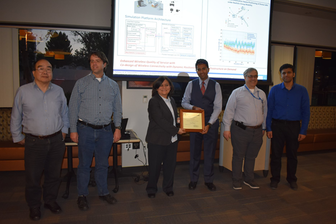
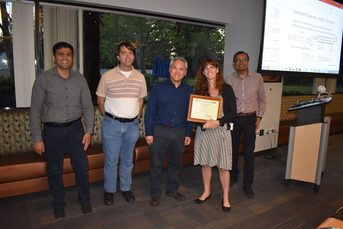
Left Photo: Lecture with Dr. Nageen Himayat. From left to right, George Chen (Secretary), Robert S. Ogg (Advisor), Nageen Himayat (Intel), Imran Bashir (Chair), Johnathan David (Advisor), Mojtaba Sharifzadeh (SSCS-Chair). Right Photo: Lecture with Dr. Alyssa Apsel. From left to right, Mojtaba Sharifzadeh (SSCS-Chair), Robert S. Ogg (Advisor), Julian Tham (Cypress), Dr. Alyssa Apsel (CASS DL), Amit Jha (Vice Chair)
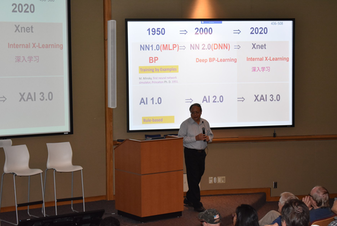

Left Photo: CASS AI4I Forum Fall 2019. Dr. S. Y. Kung giving a lecture on Xnet. Right Photo: CASS AI4I Forum Fall 2019. Pete Warden (Google) receiving a certificate from CASS.
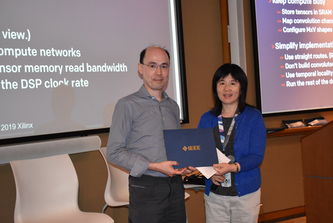
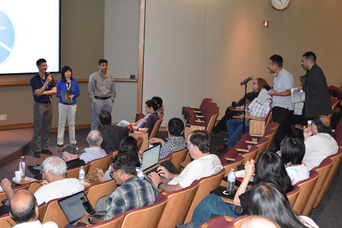
Left Photo: CASS AI4I Forum Fall 2019. Ephrem Wu (left) receiving a certificate from Tong Zhang (Intel, AI4I event organizer). Right Photo: CASS AI4I Forum Fall 2019. Jianhui Li (Intel) answering questions from the audience.
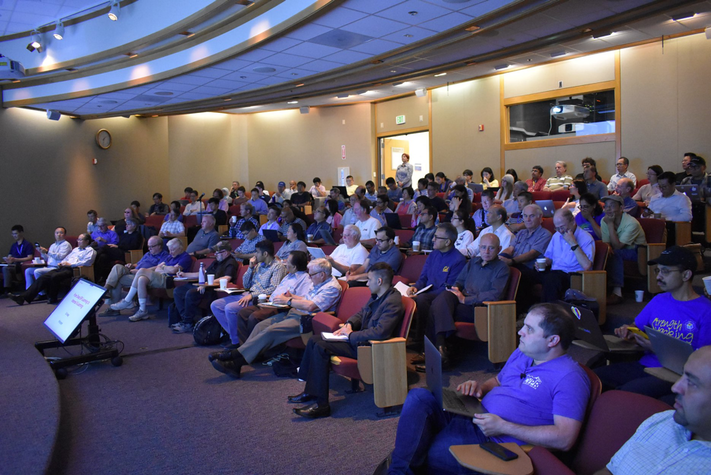
CASS AI4I Forum Fall 2019. View of the lecture hall at SC-9 Intel, Santa Clara during the event.
CASS now has its own channel on IEEE TV for streaming of previously recorded lectures. Here is a brief outline of our future events. Dr. Chris Gwo Giun (CASS DL) will give a lecture titled "Algorithm/Architecture Co-Design for Smart Signals and Systems In Cognitive Cloud/Edge” on September 13th. Dr. Shanti Pavan (CASS DL) will give a lecture "Dissecting Design Choices in Continuous-time Delta-Sigma Converters" on September 26th. Dr. Chris Hull (Intel) will give a lecture "Millimeter-Wave Power Amplifiers In FinFET Technology" on October 16th. Please visit our website @ http://sites.ieee.org/scv-cas and join the email list to receive notification of future events and instructions on joining remotely through Zoom. Please visit our Facebook page using the search string “IEEE SCV CAS.” If you have any feedback or suggestions, please email us: ieee.scv.cas@gmail.com.
Imran Bashir
IEEE CASS Santa Clara Valley Chapter